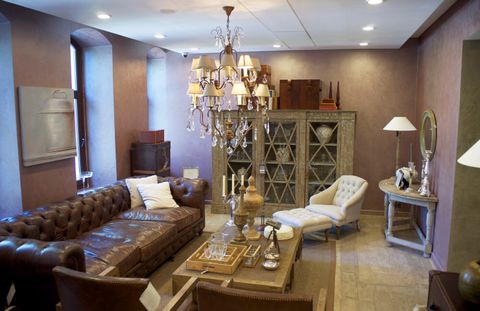Importance – Why Window Trends Matter Now, Who It Affects, What Problems They Solve
Why it Matters
Energy efficiency: Windows contribute significantly to heat gain or loss. Modern trends aim to improve insulation.
Climate impact: Buildings account for a large share of energy consumption. Upgrading windows helps reduce environmental footprint.
Comfort: Properly designed windows can improve natural light, reduce glare, and maintain indoor temperature.
Health & well-being: Views of nature, daylight, ventilation—these impact mood and physical health.
Who It Affects
Homeowners seeking lower energy bills and more comfort in living spaces.
Architects and designers looking to incorporate modern aesthetics and sustainable design.
Builders and contractors tasked with meeting building codes for energy or environmental performance.
Policy makers and planners involved in urban development and sustainable infrastructure.
Problems These Trends Help Solve
Poor thermal performance leading to high heating or cooling needs.
Excessive noise in urban environments.
Indoor air-quality issues when ventilation is insufficient.
Lack of daylight, which can lead to higher use of artificial lighting.
Higher operational energy consumption and carbon emissions.
Recent Updates – Changes, Trends, or News from the Past Year
Here are some of the recent developments in window technology and design (up to around mid-2025):
| Trend | Description | Notable Milestones / Events |
|---|---|---|
| Smart glass and electrochromic windows | Glass that can change tint or opacity electronically to control light and heat. | In 2024, several manufacturers released thinner, lower-voltage electrochromic panels with faster switching times; demonstration projects in Europe and North America have scaled up. |
| Triple and quadruple glazing | More panes, better insulating gas fills (e.g. argon, krypton) to lower U-values. | By late 2024, passive house projects began standardizing triple glazing; new manufacturing methods reduce weight and cost. |
| Sustainable and recycled frame materials | Use of recycled aluminium, sustainably sourced timber, composite frames. | Certifications like FSC and LEED emphasize frame sustainability; recycled aluminium frames saw higher adoption in 2025. |
| Large-format windows and minimal-frame designs | Bigger panes, thinner frames to maximize view and daylight. | Innovations in structural glazing systems allow for large spans without bulky support; glass with higher strength makes this possible. |
| Improved coatings and solar control | Low-E coatings, spectrally selective coatings that allow light in but block heat. | New coatings introduced in 2024-2025 maintain higher visible transmittance with better solar heat gain control. |
| Ventilation and health-oriented design | Windows that open in smart ways, integrated ventilation, screens to reduce pollutants. | Post-Covid, greater demand for windows that support airflow without sacrificing security or insulation. |
These trends reflect responses to climate change, health awareness, rising energy prices, and updated building standards.
Laws or Policies – How Regulations and Programs Shape Window Trends
Regulations and incentives play a key role in determining which window features become mainstream.
Energy Efficiency Standards
Many countries impose minimum energy performance requirements for windows, often specified by U-value, solar heat gain coefficient (SHGC), and air leakage rates. Examples:
In the European Union, the Energy Performance of Buildings Directive (EPBD) pushes for nearly zero-energy buildings (NZEB), influencing windows with high insulating performance.
In parts of the United States (e.g. California), Title 24 demands certain efficiency metrics for new windows.
In India, the Energy Conservation Building Code (ECBC) includes specifications for solar heat gain and daylighting.
Building Codes and Certifications
Passive House / Passivhaus standards require very low U-values (often < 0.80 W/m²·K), airtightness, and often triple glazing.
LEED, BREEAM, IGBC and similar green building rating systems reward use of high-performance windows, renewable or recycled materials, and daylighting.
Incentive Programs and Rebates
Governments or regional authorities may offer incentives to encourage installation of efficient windows. Examples include:
Rebates for retrofitting existing homes with energy-efficient windows.
Tax credits or subsidies for windows meeting specified performance levels.
Regulations and policies differ by country or even local jurisdiction; compliance is often required for new construction or major renovations.
Tools and Resources – Aiding Decisions, Measurements, and Planning
Here are tools and resources helpful for understanding, selecting, or evaluating window trends.
Performance Calculators and Simulation Tools
Window U-value calculators – To estimate thermal performance of proposed window assemblies.
Solar heat gain calculators – For determining how much heat enters through the glass.
Daylighting simulation software (e.g. Radiance, Daylight Factor tools) – To model interior light levels.
Websites and Databases
Green building councils (e.g. USGBC, IGBC) – Guidelines, case studies, research on window performance and materials.
Manufacturer data sheets – For U-value, SHGC, Visible Transmittance (VT), material composition.
Academic and trade publications – For recent tests and comparative studies of coatings, glazing, frames.
Design Guidelines and Templates
Passive House Planning Package (PHPP) – Includes templates for window performance in certified buildings.
Standard architectural detail libraries – For common frame, glazing, sealing assemblies.
Inspection and Testing Services
Thermal imaging or infrared testing to discover heat leaks at windows.
Air leakage tests (blower door tests) to assess the quality of installation.
Frequently Asked Questions
What is U-value and why is it important?
U-value measures how well a window prevents heat transfer; the lower the U-value, the better the insulation. It matters because poor windows can cause heat loss in winter or heat gain in summer, increasing energy use.
What is solar heat gain coefficient (SHGC)?
SHGC is the fraction of solar energy admitted through a window, both directly as light and indirectly as heat. A lower SHGC helps reduce cooling loads in hot climates; higher SHGC may help in cooler climates to capture solar heat.
Do more panes always mean better performance?
More panes (double, triple, or even quadruple glazing) usually improve insulation, but effectiveness also depends on:
Quality of gas fill (e.g. argon, krypton).
Spacer materials.
Frame insulation.
Correct installation (air tightness, sealing).
Without good installation, benefits are reduced.
What are smart windows, and are they reliable?
Smart windows include features like electrochromic tinting, photochromic glass, or automated control systems. Reliability has improved:
Recent models offer faster switching and lower energy use.
Maintenance depends on the technology; electronic parts may need occasional checks.
How do window trends differ across regions and climates?
Climate drives which features matter more:
In hot climates: focus on solar control, reflective coatings, high SHGC control.
In cold climates: focus on insulation, low U-values, heat retention.
Moist or humid climates may prioritize moisture control, mold prevention, ventilation.
Also building codes and material availability vary by region, affecting adoption of trends.
Conclusion
Window trends are advancing on multiple fronts: energy efficiency, sustainable materials, smart functionality, and aesthetic design. These changes respond to growing needs for environmental responsibility, comfort, health, and meeting stricter regulations.
Understanding performance metrics (like U-value and SHGC), regional climate demands, and quality of installation are key to making decisions that last. Keeping informed about new products, codes, and technologies helps homeowners, architects, and builders adapt.
As trends continue evolving, staying aware of regulation updates, sustainable innovations, and practical tools will ensure windows not only look modern but also contribute positively to overall building performance.





